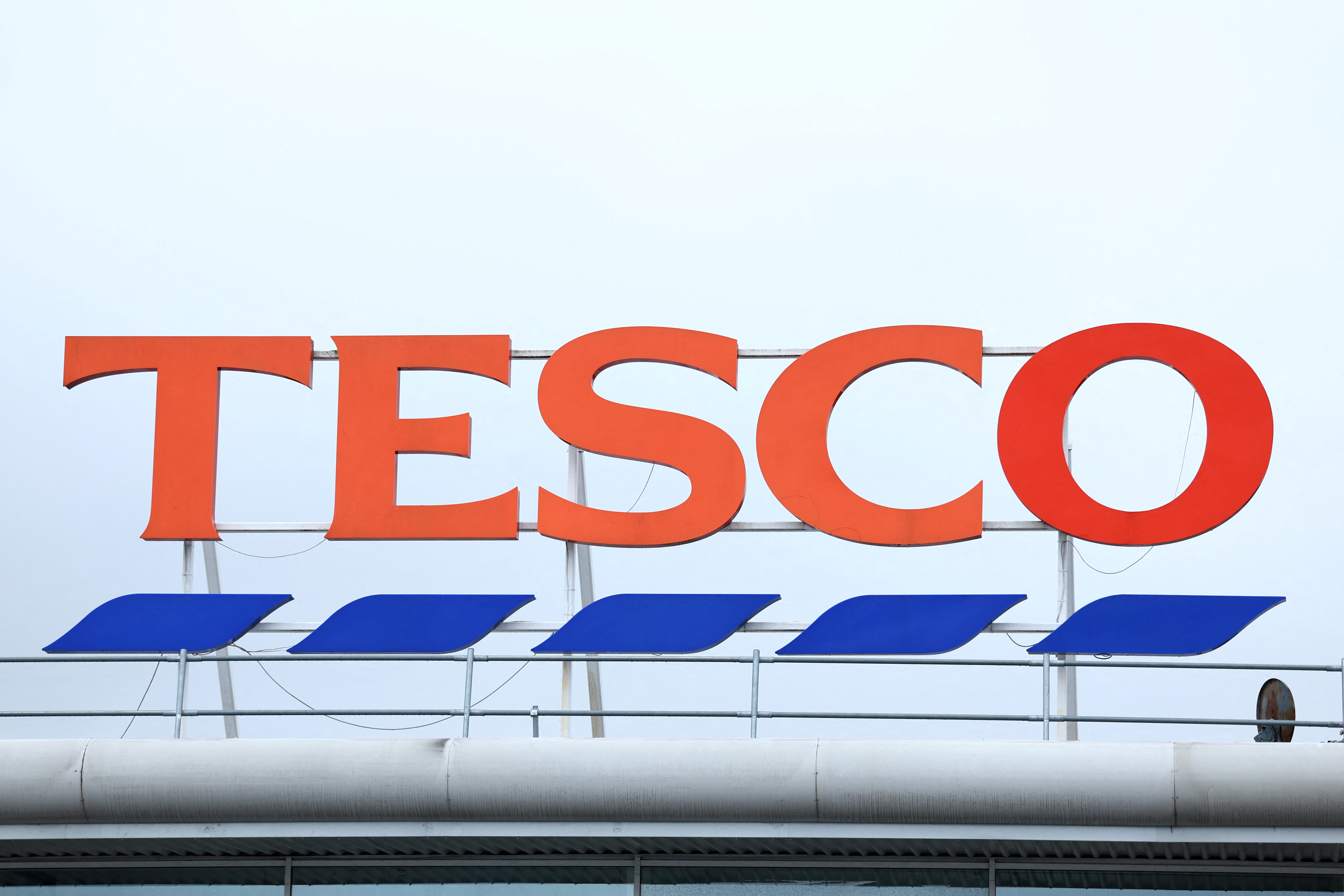Analysis-As Tesco and Sainsbury’s seize the moment, UK grocery laggards face uphill task

By James Davey
LONDON (Reuters) – As British shoppers try to stretch their spending further each week, supermarket leaders Tesco and Sainsbury’s are using their superior financial firepower to win over customers from debt-laden rivals struggling to compete.
A recent survey from consumer group Which? found the two groups outperformed their privately owned rivals Asda and Morrisons on key metrics including store appearance, quality of products and stock availability, helping them sell more goods.
And with Asda and Morrisons both now owned by private equity and weighed down by the increasing cost of servicing debt, Tesco and Sainsbury’s are looking to take advantage. They are keeping a lid on prices, agreeing longer deals with suppliers, investing in technology and automation, and navigating a still tight labour market by paying higher wages.
Alex Clifton, 20, a student in the English City of Bristol, is sticking with Tesco, drawn by its loyalty scheme.
“Since Tesco stepped up Clubcard Prices I don’t even consider shopping at Asda or Morrisons because not only do you get better quality food but now it’s also cheaper,” he said.
Weekly pricing data from industry publication The Grocer regularly shows Tesco and Sainsbury’s are cheaper once savings for members of Tesco’s Clubcard and Sainsbury’s’ Nectar are taken into account.
Both schemes are driving volume growth, giving them more leverage with suppliers. More five and 10-year deals with suppliers are driving more competitive prices and further volume growth and consequently even better deals with suppliers. Britain’s 230 billion pound ($295 billion) grocery market has long been fiercely competitive, driven by the fast-growing German-owned discounters Aldi and Lidl who have forced all other players to rip out costs and improve prices to avoid losing customers. In the 12 weeks to Feb. 18, Tesco and Sainsbury’s held a combined 43.2% share of the UK market, up 0.7 percentage points on the year, according to data from market researcher Kantar. In the same period, Asda and Morrisons dropped by 0.7 percentage points to a combined 22.6% continuing a trend seen since they were sold in 2020 and 2021 respectively.
“Morrisons and Asda are in private equity ownership, they’ve got a lot more debt and given what’s happened to interest rates they’ve just got less financial flexibility, so they’re less able to compete,” said Richard Marwood, head of income at Royal London Asset Management, a top 35 shareholder in both Tesco and Sainsbury’s. Sainsbury’s CEO Simon Roberts told Reuters last month that now was “a moment in time to take advantage of the position we’re in.” He also told reporters he did not believe many of his competitors could match Sainsbury’s up to 15% hike in capital expenditure to 2.6 billion pounds over the three years to 2026/27, designed to improve technology, logistics and fulfilment.
“It’s really this that we believe will increasingly separate out the winners from the rest of the industry,” he said. Sainsbury’s has also invested 780 million pounds over the last three years to keep prices down during a time of inflation, like Tesco, matching the prices of discounters Aldi and Lidl on key items. Both Sainsbury’s and Tesco have hiked staff pay for 2024 by over 9%.
LIMITED FIREPOWER
Last month Morgan Stanley made Tesco its top pick in European retail for 2024, while HSBC said Tesco and Sainsbury’s were two of its top three picks in European food retail, along with France’s Carrefour, highlighting their scale, cost savings opportunity and ability to grow sales on a volume basis.
That momentum is much harder to imagine at Asda and Morrisons. While all UK supermarket groups will face higher business rates this year and a 10% hike in the government-mandated minimum wage, Asda and Morrisons also have to contend with rising interest rate bills, limiting their firepower.
Private equity group TDR Capital joined brothers Zuber and Mohsin Issa to purchase Asda from Walmart in a 2020 deal which left the U.S. giant retaining a 10% stake. Morrisons was bought by U.S. private equity group Clayton, Dubilier & Rice in 2021.
Both deals were highly leveraged and borrowing conditions have deteriorated significantly, making them look expensive.
Asda’s parents from February faced a 30 million pound rise in debt costs when the fixed interest rate on one sixth of their 4.2 billion pound debt expired. Finance costs in 2022 were 396 million pounds.
Morrisons ended its 2022/23 year with debt of 5.5 billion pounds, paying interest of about 400 million pounds during the period. While payments in 2023/24 will be less after it used proceeds from the sale of its petrol station business to pay down debt, it will still face a big bill.
Morrisons’ new CEO Rami Baitiéh has said he is not satisfied with its performance and plans a strategy overhaul. Asda is pinning its hopes on a big expansion in convenience stores. But they face a tough challenge.
“The gap in the grocers is clear and it’s hard to look too far beyond the highly leveraged businesses and the interest millstone they carry as the reason for the laggards,” another UK grocery industry veteran, who did not wish to be named, told Reuters.
($1 = 0.7797 pounds)








